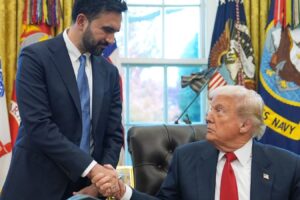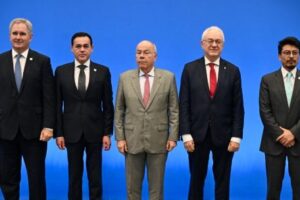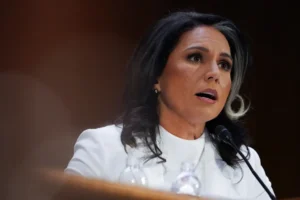
[RESUMO] In Indonesia, Lula ended the theater: he will run for President again in 2026, at the age of 81. For four decades he has eclipsed Brazilian politics, rising from the ashes with each crisis — from prison to meeting Trump in Malaysia. But in his shadow only the political desert grows, without alternatives, which he himself helped to create.
When, last Sunday, the meeting had all the ingredients of the impossible. Three months earlier, Washington had imposed 50% tariffs on Brazilian products and sanctions on ministers of the Federal Supreme Court. The bilateral crisis was the most serious in two centuries of diplomatic relations.
And there was Lula — persecuted, arrested, with cases annulled by the STF, re-elected — talking on an equal footing with Trump, who declared that he admired the Brazilian’s political career,
The scene in Malaysia is the perfect synthesis of Lula’s extraordinary capacity for political survival. He is reborn from the ashes. From prison in Curitiba to Palácio do Planalto in less than five years. From the politician with legal proceedings to the statesman who negotiates with powers. This capacity for rebirth, however, has also become a symptom of national weakness: our democracy is unable to produce alternatives to its longest-lived protagonist.
A few days earlier, in Jakarta (Indonesia),. “I’m going to turn 80, but you can be sure that I have the same energy as when I was 30. I’m going to run for a fourth term in Brazil”, he declared alongside Indonesian President Prabowo Subianto. And he added, with revealing frankness: “I’m prepared to contest other elections.”
With this sentence, the most predictable talk in Brazilian politics ended. : “When December 31, 2026 arrives, when we hand over this mandate to someone else, the country will be fine.”
Well then. The second act has arrived. He promised to change everything and changed his mind. He swore to leave, but he only swore. The indecision was theater. The ending, predictable.
By confirming that he will run for a fourth term, Lula ends the theater of doubt and reveals a country incapable of replacing him. At this point, the author is forced to correct the text itself: it is not about running for a fourth term, but a seventh presidential attempt. Lula was a candidate in 1989, 1994, 1998, 2002, 2006, 2022 and now he will be again in 2026. Before that, he was elected federal deputy in 1986 and defeated the government of São Paulo in 1982.
In other words: Lula has been a candidate for something for 43 years. And perhaps the country has gotten so used to seeing him compete that, when it votes for him, it seems to reenact the same act.
The issue, therefore, is not age, but longevity. Not the biological one, but the political one: the fact that Brazil, four decades later, still depends on the same name to save democracy, articulate hope, power and stability. Brazilian politics seems like a merry-go-round: it spins, but the axis continues to be Lula.
Born on October 27, 1945, he will reach the first round of 2026 and 11 months; to the second, with 81. No president in a consolidated democracy has reached this far in age and, above all, in time of continuous influence. But it’s not the body that worries. It’s the emptiness around.
Lula’s energy at 80 is, in fact, remarkable. Traveled 22 hours by plane to Indonesia. He participated in ceremonies, signed commercial agreements, and had an early birthday party with President Subianto (who turned 74 days earlier). He went to Malaysia. Met with Trump for 50 minutes. He negotiated tariffs, defended STF ministers, proposed mediation in Venezuela. He returned to Brazil after a week of intense schedule.
There are no signs of cognitive fatigue. There is no loss of command. Lula maintains his political instinct, his charisma, his ability to improvise — which, because he is so efficient, sometimes stumbles over his self-confidence and makes gaffes, such as saying that. His lucidity at age 80 surpasses that of many younger leaders.
Individually, so much vitality is admirable. Collectively, our problem is the absence of energy around it. Lula persists because the system did not produce alternatives — and he himself did not allow them to exist.
In 2010, forced to leave office, Lula had the political capital to elect anyone. There were prepared staff, young leaders, talented ministers.
The objective was clear: not to threaten him. Dilma was not designed to lead, but to hold her place until her boss returned. Did Lula want to return in 2014? Those who know him closely say yes. He did not return due to resistance from Dilma herself, in an episode never satisfactorily analyzed by journalists, historians and political scientists.
Fernando Haddad, despised in 2010, and Bolsonaro swept the country.. This is how Lula moves his pieces
(Here, the author is forced to correct his own text again. Even from prison, in 2018, Lula ran as a candidate, but was blocked by the Electoral Court. Which brings the number of his presidential attempts to eight.)
Dilma was not an heir, it was an interregnum. Haddad became a representative. . No successor survived within the PT. The party aged under the shadow of the man who founded it. And there it stayed. In the shade. There have been several opportunities to forge new leadership over the decades. And 2010 was perhaps the most appropriate time for a true renewal.
In 2022, Lula literally held democracy by the collar. Barely. But 2026 will be another story. . The next election promises to take place within democratic normality. The right will have your name. On the left, there is only Lula. Around him, the political desert that he himself helped create.
And there is always a justification for Lula to run. This time, it is the advance of the right in the electorate. Only he could counter this wave. Only he would keep the left in power. The logic is renewed with each cycle, but the protagonist remains the same.
The criticism, I repeat, is not of the octogenarian candidate, but of the political system that makes him indispensable, of the party that dissolved within it and of the country that did not know how to create alternatives.
Lula is a populist. And this is not an offense, it is an observation. I do not need academic approval: the word has a descriptive value, not a derogatory one. When “Come and do the L” replaces the party program, it becomes obvious that there is no longer a party, just one man.
The man who speaks “like the people” has for decades learned to be the people himself. Its populism is democratic, performative, conciliatory and self-centered. He speaks to those below against those above, he embodies the wronged person who won, he transforms biography into myth. It promotes social inclusion without breaking the pact of the privileged: rentiers, conglomerates built by state credit.
It would be unfair, however, to treat Lula as an aberration. Models of representation have changed around the world, as demonstrated by French political scientist Bernard Manin, who died in November 2024. According to him, contemporary democracies are no longer party democracies but have become “public democracies”.
In them, voters are no longer guided by ideologies or collective programs, but by emotional bonds with charismatic figures. Politics became a spectacle, and voting became an act of personal identification. The leader comes to represent the diffuse feeling of the majority — not a platform, but a character.
In this environment, populism is neither a deviation nor a destiny: it is a constant possibility. It arises when political representation is confused with performance, and the public transforms the politician into a protagonist. Party democracy gave way to public democracy.
There is another factor to note. Lula is also the legitimate son of the system that surrounds him, the same one that kept oligarchies in power for decades. Alckmin governed São Paulo for 12 years; for almost half a century; in dynasty; Maluf, Quércia, Garotinho and Barbalho are regional variations of the same pattern. In Brazil, power rarely changes hands.
Lula, therefore, did not invent perpetuation, he just democratized it. He built his longevity on direct voting, genuine popularity and personal charisma. However, the result is the same: the system’s inability to produce renewal.
And not just in majority elections. As , proportional voting in an “open list” is, in practice, a disordered list, an invitation to choose faces, not ideas. The model transforms each candidacy into a personal franchise of power. The vote no longer represents a collective project and becomes a private asset.
The parties, dominated by their vote owners, lose the ability to renew themselves. The result is an immobile Congress, with lifelong chiefs and endless re-elections. It is in this field that populism thrives — and that Lula becomes, more than a leader, an institution.
Democracies tend to cling to leaders who seem irreplaceable, as the United States did with , elected four times in a row between 1933 and 1945. His stay in power was such that the country created, in 1951, the 22nd Amendment, limiting all presidents to two terms. The measure was born out of the fear of seeing a democracy transform into an elective monarchy.
Brazil, by allowing re-election in 1997 through Constitutional Amendment nº 16, followed the opposite path. He believed that the limitation to two consecutive terms, even with the possibility of returning after an interregnum, would be sufficient to avoid perpetuation.
However, he ignored the lesson that: a leader does not need a coup or fraud to perpetuate himself. The popularity and lack of alternatives are enough. This is exactly what Americans feared: not the abuse of power, but dependence on the leader.
Lula, like Roosevelt, does not govern by force, but by the absence of anyone who can replace him. And, like Roosevelt, he became the guarantor of a stability that also hides the fragility of institutions. The difference is that the Americans learned their lesson in 1951. Brazil still postpones it.
Lula, at 81, will be the oldest candidate in a stable democracy. He is the longest-serving popular leader in the country’s history. Getúlio Vargas, it is true, governed for longer — 18 and a half years, between 1930 and 1954. But of these, only six and a half years were in democratic governments (1934 to 1937, elected by the National Constituent Assembly, and from 1951 to 1954, this time by popular vote). Eight years were from (1937-1945). Four years of provisional government without elections (1930-1934), after taking the. Getúlio built
Lula, on the contrary, built his own exclusively through direct voting, through genuine popularity, through the ability to reinvent himself within democratic rules. This is exactly what makes his longevity even more emblematic: not only his time in power is impressive, but above all his 43 years of uninterrupted political influence, successive candidacies, and constant presence in the national imagination.
An admirable feat and, at the same time, an alarming symptom: that of a nation that confuses continuity with the future. Democracy ages when the future is treated as a risk, and the past as a comfort zone.
. But it also revealed something deeper: Brazil, after 43 years, still needs it to make itself heard in the world. Brazil did not age with Lula. Brazil aged because it couldn’t get out of it.





